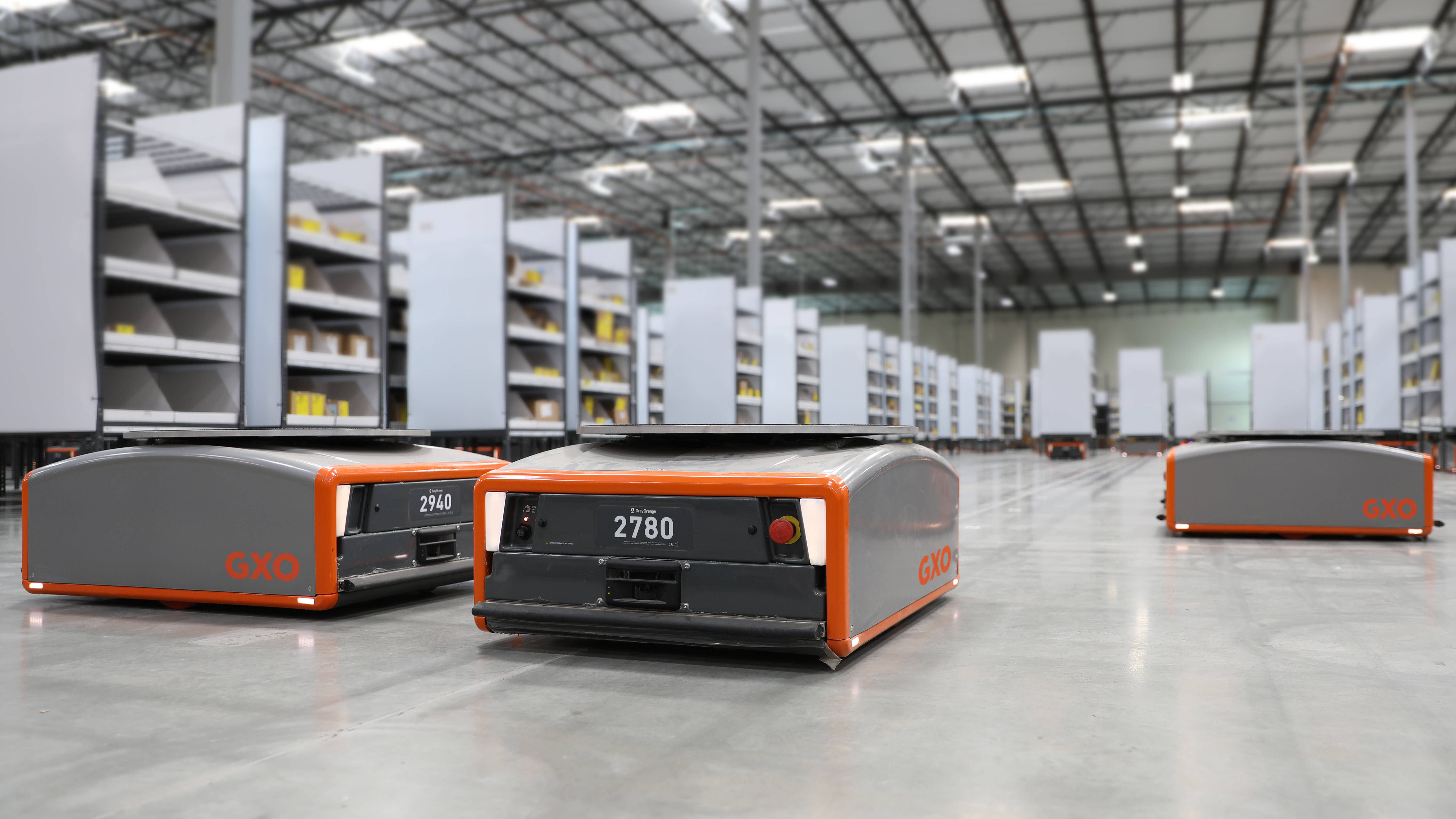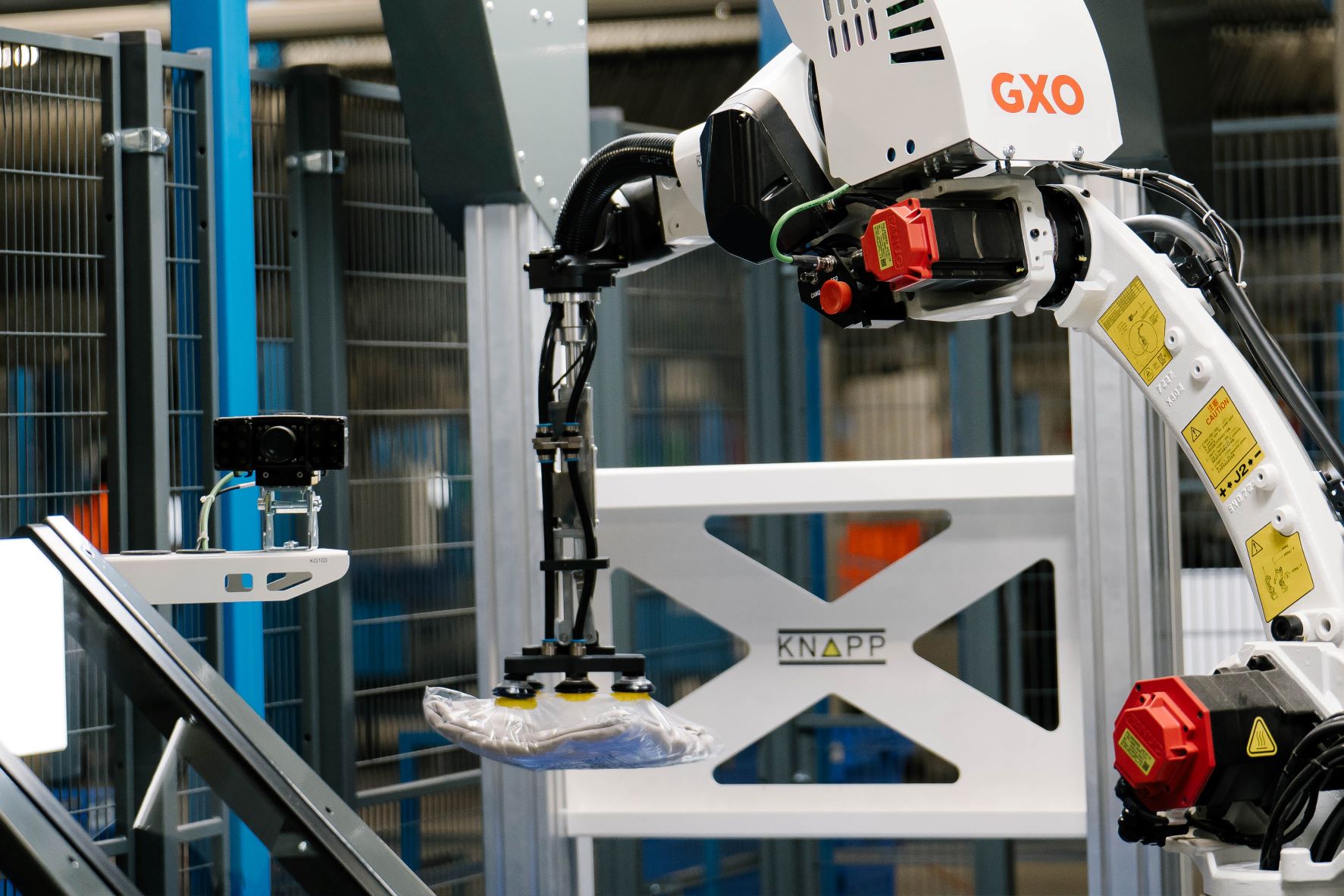In one warehouse, robots pivot to automatically stack pallets with different products -- autonomously determining which should go at the bottom and which at the top -- while staff wearing lightweight barcode scanner gloves check stock, as driverless vehicles stack shelves. In another, a robotic arm allied to a sophisticated set of AI algorithms picks up packets of clothes, identifies precisely what they are and places them accordingly.
The warehouses belong to GXO Logistics – one of the largest contract logistics providers in the world, with some 208 million square feet of warehouse space in 869 locations across 27 countries. Spun out of XPO Logistics in August, GXO Logistics is investing heavily in robotics amid double-digit growth quarter-on-quarter -- and is competing increasingly bullishly in the fiercely competitive market for skilled IT staff as it grows.
Overseeing the digital side of this global 3D Tetris operation -- on behalf of clients like Apple, Nestlé, and Nike, among others -- and making many of the hires as he builds out a 1,500-strong global IT team, is Chief Information Officer (CIO) Sandeep Sakharkar, the executive appointed by GXO Logistics in March 2021 with a mandate to drive innovation across its ecommerce, food and beverages, industrial, reverse logistics operations and beyond.
With over 9,000 job vacancies unfilled in the US alone (as of October 2021) and thousands more globally, the push for increased automation is not hard to understand. Training and retaining staff has long been challenging across the logistics world (critics point to long hours and poor pay; GXO Logistics says it offers competitive benefts, good overtime pay and flexible work) and on the IT front, GXO Logistics is competing with deep-pocketed technology and financial services firms for data scientists, developers and other talent.
Follow The Stack on LinkedIn

One of GXO Logistics’ poster child projects is a distribution centre and technology hub in the UK's Leicestershire, built for Nestlé and developed alongside technology partner Swisslog Logistics Automation. (The centre has the highest throughput of any warehouse in Nestlé’s global network and handles goods like KitKats that are produced by 11 Nestlé UK manufacturing sites, alongside those imported from several markets worldwide.)
CIO Sandeep Sakharkar tells The Stack that building out his team to help innovate around similar sites is a key priority as the supply chain world evolves rapidly: "For anybody looking for work in robotics, automation, data, AI, ML; look us up! We're brand new and we're hiring! We have solid learning development and career progression opportunities and great values around inclusiveness and really changing the game."
Good career progression is one perk he presents. Having initially trained as a mechanical engineer and spent the first few years of his working life on the shop floor, Sakharkar's keen to talk up the eclectic opportunities at GXO Logistics. (He's had a varied career himself: "Over the years I've had exposure to a lot of industries and roles; application engineering for very technical engineering tools, business development, driving business transformation. It's been a combination of engineering, software, architecture, and then management...")
See also: Nike’s digital ambitions hit supply chain snags
He's needing every one of those skills as CIO now.
The logistics world -- like most sectors -- went through radical change in the wake of the pandemic. Unlike many other industries, it didn't do this while retrenching, but while growing massively amid a shift to more ecommerce, amid staffing challenges. Technology has been at the centre of that shift, he notes, pointing to "three pillars: the physical automation like the robotics and IOT systems; the digital automation like differentiated software, interfaces, APIs; and then the data -- using historical analytics to get more real-time predictive analytics.
"Our focus is on continuing to differentiate ourselves as an organisation that uses technology to create very differentiated, specialised solutions, that drive value for our customers."
It's doing that in a world of dramatically evolving supply chains. As the GXO Logistics CIO puts it: "At a very high level, the past 10 years has been all about the consumer engagement and purchase journeys as internet penetration grows. Almost every good company has done that now; the customer engagement website and applications and so on... The next decade will be all about supply chains. Historically they have been black boxes.
"Now three things are happening: 1) Supply chains are becoming more transparent, and the ability to recognise where your product is at any moment in time is becoming more important; 2) this is having to become more accurate and 3) the industry is having to do this in a very efficient and cost-effective manner."
"If you look at a customer like Nike, having the product in a place that can serve the customers very quickly is very important to them, as is the ability to take returns and [bring them back into your] inventory."
See also: Five Questions with… Dr Joerg Storm: CIO Aftersales Mercedes Benz China, Hong Kong, Taiwan

From a more pure IT perspective, Sakharkar says he regularly reminds his team that they are not "doing technology for the sake of technology; it's there to deliver value"; but there's no shortage of heavy lifting to be done on the software side anyhow and the company needs to have the ability to deliver it at speed, he notes: "Your frameworks, DevOps and Agile practices become super critical in this world; having that regimen around doing your Sprints on time, doing the test automation and making sure they are delivered as expected."
He won't be drawn on the insourcing/outsourcing balance he favours ("I don't want to give a binary answer on that: the focus is on getting the frameworks and practices in place that make our work very repeatable"), but notes briefly on the infrastructure side that it's a hybrid mix of some GCP SaaS, some on-premises workloads -- "we just look at what's best serving our customers in terms of stability and scalability: I don't think anybody talks about 'cloud first' anymore; it's about the use of cloud in the right place and for the right reasons."
But asked about what advice he'd give to those hoping to make CIO and -- despite his vocal affirmation of the need for IT leaders to be as close as possible to the business as they can -- he drives home a point we hear less at The Stack: "I think more and more CIOs can't be a classic 'general management' type. They need a depth and breadth of understanding of technology. I'm seeing that change: CIOs [increasingly coming from] tight architecture backgrounds. You really have to have your teeth sunk in to what these modern technologies do; while being able to articulate that value within your organisation to your business partners."









